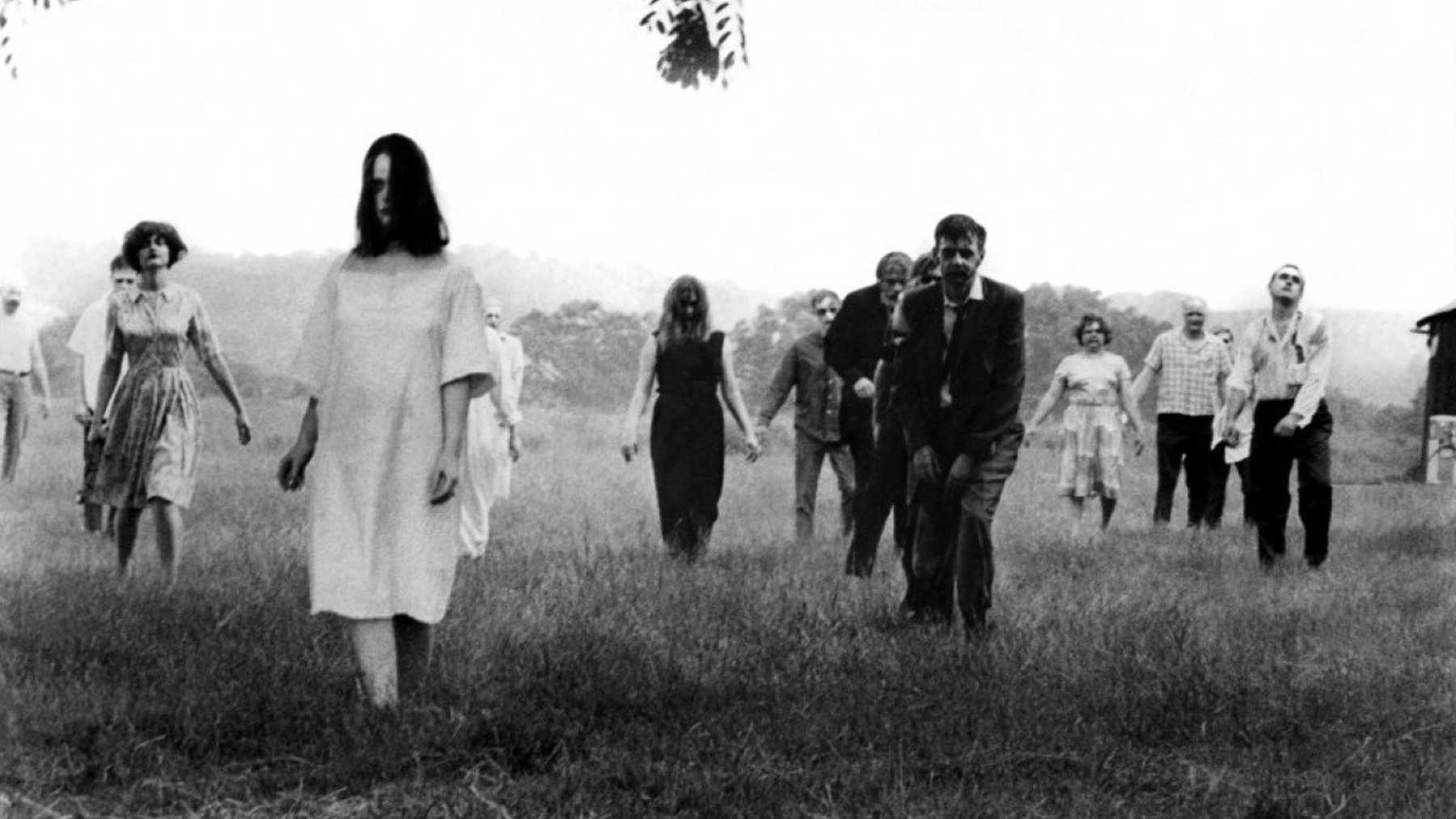
(Remember to watch the movie first before reading if you want to avoid major spoilers!)
28 Days Later (2001) is another film from my adolescence to which I am strongly attached. It is perhaps the film on this syllabus that I have seen the most times, aside from Alien. It was a major release in the US, despite being a UK film, and it certainly left a mark on both the popular culture the the horror genre. It redefined zombie movies in 2001, at the turn of millennium, as Night of the Living Dead did in 1968. As The Blair Witch Project was the first film to popularize found-footage, leading to an onslaught of found-footage copycats, 28 Days Later was the first to popularize “fast zombies.” Danny Boyle used a special, distinguishing camera technique to film the infected to render their “staccato” movements.*
Part of the reason this film is such successful contemporary horror is how intimately human and humanizing it is. I don’t think I have cared for a group of horror characters more than this motley crew. And I don’t think I’ve found a scene in a horror film more poetically evocative than the four horses running free across the British countryside, which is also dotted with crumbling ruins, a subtle reminder that all civilizations must end or transform (not just ours). It’s beautiful imagery. But then, at the same time, I don’t think there are many scenes in films more terrifying and stressful than the tunnel scene. In this way, the film incorporates many different genre elements, not just horror, to create a layered, postmodern psychoemotional experience for viewers.
This is also a good horror film to analyze keeping in mind that “fantastical” and “real” horrors often intersect in surprising and generative ways. For example, the shot where Jim sees the dead mother holding onto her dead baby–a highly emotional and disturbing shot–is based on a photograph director Danny Boyle saw of a mass of Kurd bodies after they had been gassed. The Missing Persons poster scene was criticized by many because the film released right after 9/11, when families hung posters for their missing from that disaster, but of course it had been planned and filmed long before.
28 Days Later has often been called a “political allegory.” Indeed Garland and Boyle build a political allegory within their zombie film. But zombie films, being apocalyptic narratives, more often than not inadvertently invoke images of war (e.g. piles of bodies) and dystopian authoritarianism that echo events both historical and current, in ways that defy directorial “intention.” Night of the Living Dead’s final shot of police murdering an innocent black man unfortunately resonates very strongly with us in 2021. 28 Days Later accidentally alludes to the chaos of 9/11. It is too simplistic to say this is a case of “life imitating art” and/or art imitating life; rather, it is perhaps a case of art and “reality” communicating and connecting in ways that help us understand the complexity of that symbiotic relationship more fully.
Also noteworthy here is that the zombies in this movie are not undead, and given this fact, they are arguably not zombies all. It’s also the one film we are watching that has no supernatural or speculative explanation for its horror. The rage virus is explainable, and should have been preventable; a series of human errors and recklessness led to its outbreak, not a meteor or some mysterious force. These elements further emphasize that this is a human film. Part of the horror is that its depiction of societal collapse in the face of a virus like this, should it ever arise, seems entirely plausible. More, the rage virus exploits the potential for violence inherent in all of us. The brutally violent scene when Jim appears to be be infected** was one way of illustrating this concept.
There is much more that can be said about 28 Days Later, but I’ll just end this post with links to the film’s alternate endings. All alternate endings can be watched here (including storyboards that were never filmed):
But in the DVD commenterary, both Garland and Boyle assert that this ending is the canonical one in their eyes:
This ending is substantially different from the ending of the theatrical release. It was scrapped because test audiences claimed it was too depressing and meant “certain death” for the remaining characters. Personally, I think it’s perfect. But whichever ending you prefer, it’s worth thinking about (1) how test audiences in 2001 determine the film we receive in 2021, and (2) why Garland and Boyle choose this ending as the “true ending” (direct quote) for the film they made.
*A note from imdb:
“Danny Boyle explains on the DVD commentary that he shot all the scenes of the Infected in a particular style – using a type of slow motion feature on the Canon XL1 DV cameras with which the film was shot. Boyle explains that the cameras allow filming at up to 1600fps (normal speed is 24/25fps), but that shooting at such a high speed on a DV camera doesn’t produce the same effect as it would on a 35mm camera. Shooting at that speed on a film camera gives basic slow motion, but doing so on a DV camera produces the kind of staccato effect seen in scenes involving the Infected. As Boyle explains it, it almost looks as if every third or fourth frame is trimmed insofar as the image has a ‘jumpy’ quality. **Boyle also explains that during the climax of the film, as Jim runs around the mansion, all the scenes involving Cillian Murphy were shot in the same way — thus setting up for the audience a psychological parallel between Jim and the Infected.”

